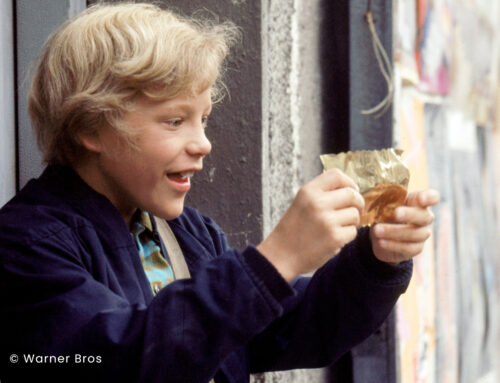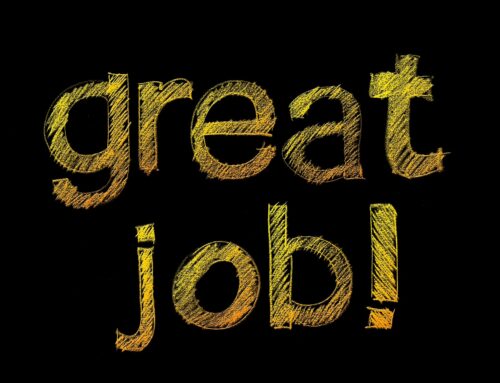
Author Dena Lefkowitz begins a knitting project.
I hope you can see from the picture how close I was to finishing. A knitting project takes effort to get started and includes, for me, some tedious stages. Since my yarn is not exactly the same as the pattern and I may knit more tightly or loosely than the pattern designer, a gauge swatch must be done.
Sometimes more than one.
By the time I’m happily chugging along in a project, I’ve passed through several routine and boring phases. And, now I’ve got momentum, I’m in the flow and it’s beginning to look like a pair of socks for my husband.
Socks are tricky because they have to be narrow in places, like the heel and toe and large in places like the calf. To accomplish that, I have to choreograph five double-pointed needles. I was using size two—among the teeniest, tiniest knitting needles around. Sock one was complete and I was rounding third and headed for home on sock number two when one of my needles broke. I ordered a new pair and crazy-glued the broken one to use until the new one arrived. Got a little closer and it broke again. Now, I’d have to wait.
Guess when that was? All I can tell you is that it was before the pandemic. And, there’s been no better time to finish a project than during the last 10 months.
Although the replacement needles arrived within days, the flow of the project was interrupted and I didn’t return to it. Still haven’t. The momentum was broken. I moved on to other things.
The blank page, the empty canvas, the open calendar, can all be intimidating and that can lead to procrastination. Why? Because you’re experiencing some level of discomfort associated with the unfamiliar.
It may not be extreme, it could just be a choice to watch “Friends” for the millionth time instead of tuning into a new show where you don’t know the characters, the plot, or if you will even like it.
Getting started is the hardest part of any endeavor, even those you love doing, which is paradoxical. If you’re a book lover, aren’t you kind of sorry to see the end coming in a really good read? Because you’re in the flow, longing to keep reading, and looking forward to getting back into it at the next possible opportunity. Then, suddenly, it’s over. You have nothing to read. Oh, there’s a stack on the bedside, or on Goodreads, or wherever you keep them, warming the bench.
But, it’s not always so easy to jump into a new book. It takes a certain kind of energy that I think of as “beginner energy.”
It has a double meaning because when you start something, you have to accept that you’re at the beginning where the distance is longest between where you are now and completion. And, in some cases, you’re the beginner. In a book or tv show, who are these people? I don’t know them. In a project, how is this going to work? How will I accomplish it? In a networking group, how will I meet people the first time I attend?
Clients often struggle with procrastination. A deadline is looming, but not yet close enough to inspire panic. They want to be organized, methodical and avoid bumping up against the deadline. When you stall out, you need some beginner energy to get started.
While it’s immensely different in terms of complexity, importance and urgency, there are some lessons from the knitting experience that come into play when you’re writing a brief, preparing for a presentation, or any professional pursuit. The question is the same.
How can you go from a cold, hard stop to achieving a state of flow, where you’re immersed, engaged and motivated? In some ways, it’s like taking a car from 0 to 60 and then to a comfortable cruising speed.
You need an on-ramp, a merge lane, a way in that allows you to get up to speed without hitting the accelerator too hard, winding up in a state of confusion and going faster than you’re ready to move or hitting the brakes and not going anywhere.
Here are some strategies that work for me and my clients to find and capitalize on beginner energy when a new project is on your plate and you’re having trouble getting started:
- Observe when your energy level during the course of the day to determine when it’s highest and most productive. For many people, it’s first thing in the morning. Perhaps our resistance to the new is lowest and enthusiasm for the novel, highest. And, having just rested, it is usually a good time to tackle the toughest activities.
- Reserve difficult tasks for times when your natural energy is at its highest.
- Write down the steps required for the project. We tend to procrastinate over a complex task and then drop it like it’s on fire when a simple to-do shows up. Break it down.
- Make sure the steps are clear and defined. That alone makes it easier to get started and then you create momentum from the adrenaline of completing each phase. Within the project, you will move through stages, each time getting to feel a sense of accomplishment as you get to the next. Include deadlines for each phase leading up to completion or submission
- If you have more than one big project, such as two upcoming briefs, consider using your beginner energy to get started on both—write down the steps and dates for each phase, so you’ve thought it through and have something to come back to in both cases.
- Block off time for working on each phase of the project on your calendar. Pacing it out and assigning yourself deadlines helps to stay on track, enabling you to determine if you have time for other people’s emergencies, and gives you assurance, if you start to worry, that you have a plan.
- Guard that time you blocked off on your calendar as if it were an important meeting with your biggest client. You need time alone to produce and if you routinely drop your plans, others will be happy to fill that time for you and you will fall behind.
- Don’t disrupt the flow! My sister called while I was writing this (sorry Ruthy!) and I kept going. It would have ceased my flow and then I’d be back to an on-ramp. Finding a way to accelerate, merge and flow is harder, and takes longer, than simply staying put and capitalizing on the swirling vortex of energy already created and activated. I’m a juggler with all my balls finally in the air—am I going to stop and answer the phone? No! Flow is a state you can easily fall out of and not as easily achieve. Don’t take for granted that you can just come back to where you were as easily as switching on a light. It isn’t. Honor the flow.
- As you move through the work, take a moment to pause when you complete a phase. Have a break, a small reward, and give yourself props for creating and executing on your plan.
If you get stuck, go public. I just published a picture of my unfinished knitting project and guess what that will do? Create the energy I need to resume that sock. Feel free to ask me how it’s going. I love accountability.
Reprinted with permission from the January 6, 2021 edition of “The Legal Intelligencer” © 2021 ALM Media Properties, LLC. All rights reserved. Further duplication without permission is prohibited. For information, contact 877-257-3382, reprints@alm.com or visit www.almreprints.com.






